-
When you click on links to various merchants on this site and make a purchase, this can result in this site earning a commission. Affiliate programs and affiliations include, but are not limited to, the eBay Partner Network.
-
Posts
2,764 -
Joined
-
Last visited
Content Type
Forums
CGC Journals
Gallery
Events
Store
Posts posted by markseifert
-
-
There are numerous mostly short-lived characters from the 1800s who fit the standard definition of a superhero. Attached are a couple I happen to have handy.
The Harlequin Detective was the secret identity of an actual police detective.
The Lone Star is very certainly the prototype for the Lone Ranger.
Keep in mind that during the 1860s-1890s, there were countless costumed vigilante groups in America for all sorts of purposes beyond the one that we most commonly think of. The exploits of such costumed vigilantes made not-infrequent news during the lives of the parents and grandparents of our foundational golden age creators, and is a major influence on the genre. (Attached is a photo of a costume of one of the Missouri Bald Knobbers)
- waaaghboss, rjpb, PopKulture and 1 other
-
 4
4
-
33 minutes ago, Chicago Boy said:
Anyone know what issue was the first to sell 1 million copies ? I think it was 3 or 5
Not until the mid-1941 or 1942, probably.
DC v Bruns, which began around the time of Action Comics #11, has it that:
QuoteThe sales of said magazine to the general public have risen from month to month since the initial publication and distribution thereof. Estimated present sales thereof to the general public are at the rate of 350,000 copies per issue out of 472,000 distributed copies of each issue thereof.
In a 1941 Saturday Evening Post article which interviews several people involved including Donenfeld, they note:QuoteThe following July, Superman Magazine bowed in as a bimonthly. It has been zipping along ever since at a lively 1,300,000, while Action Comics, featuring only one Superman story, soared to 900,000. Today Superman leads all other comic-magazine characters, one of the few within hailing distance being The Batman -- 800,000--a bimonthly also owned by Donenfeld.
- zen514 and Chicago Boy
-
 2
2
-
1 hour ago, bluechip said:
My guess is they had the cover drawn for 2 based on the Action 1 story, and after it wasn't used for 2 they didn't bother making another cover. DC got word that superman was the reason the book was selling by the time 7 went to the press and used the cover already drawn. My educated guess.
I'd bet they knew or were told what the deal was fairly early on. The reader poll they helped use to see what was driving it was in Action Comics #4 (which was the reason Donenfeld stated for the timeline on several occasions, including in court).
-
On 7/22/2019 at 10:39 AM, Crowzilla said:
Totally Agree.
When we think of street dates today, we think of one day a week where all product is released to the public (like Wednesdays now for comics, or Tuesdays for DVDs/CDs, even if the actual product has been in the warehouse for a week or more), but looking at advertised "on sale dates" and arrival dates on comics for these books, it was all over different days of the weeks, giving a lot of support to the "as soon as you get it, put it out on the stands" distribution model.
Look at the Superman ad on sale dates Nerv posted - #4 is on a Thursday (2/15) #5 is on a Friday (5/10), #6 is a Wednesday (7/10), #7 is a Tuesday (9/10), and the penciled arrival dates on the Actions he posted are Wednesday, Thursday, and Friday.
Scanned the thread real quick and didn't see what I'm about to post, but apologies if I missed it. For the record:
The controlling law for how this works is the Copyright Act of 1909. The date of publication as listed in that statute is "held to be the earliest date when copies of the first authorized edition were placed on sale, sold, or publicly distributed."
In reality, however...
I've looked at this data from the source LoC volumes a lot. Keep in mind this data was self-reported by the publishers upon filing. Mistakes are common. Estimating or outright fudging dates is common (obvious from publishers who report publication on the same day every month no matter what, regardless of weekend/weekday etc etc). Reporting older dates well after the fact is not unheard of. These dates are a very long ways from unassailable. It is also not unheard of to see penciled or stamped arrival dates BEFORE the LoC copyright date listed.All this said, Jack Liebowitz was far more careful about the paperwork than most, and I personally think that Supes #4 likely hit first. It's certainly a debatable point, though.
- Professor K and Joshua33
-
 2
2
-
9 minutes ago, PopKulture said:
Wow, you really know your stuff! It's noteworthy how well-positioned, established printers and publishers so seamlessly ascended the ladders of power and influence.
Do you have much of an interest in the children's literature of the day?
Yes, but mostly along the dime novel / story paper / nickel weekly line.
As for the power of publishers -- yes. And it's way way more than people get. There are countless examples, but keeping up with Sinclair Tousey, here's an interesting one: Tousey built the most powerful broadcast network in the world in his era, and he knew it. He was an ally of Lincoln, an abolitionist, and qualified as extremely progressive for his day. His nephew Frank produced children's fiction that covered adventure related to science and invention, working men, wall street, the military, politics, and more. In other words, every aspect of society.
Many subsequent figures understood the power of the American News Co. distribution network. It's fairly well known that American News being forced out of the distribution business due to monopoly concerns was a key contributor to the mid-1950s comics industry troubles. Less known is the fact that over the next 15 years or so, another businessman quietly put the pieces of American News back together, and then flipped it to another man who also well understood the power of such a network, and still does to this day: Rupert Murdoch.
Murdoch took those remnants of vernerable old newsstand distro dynasty American News Corp, dropped the "American" and named it News Corp. -
4 minutes ago, PopKulture said:
Really great stuff, Mark! I chase little scraps of history as well. I pick up weird mags like the National Bi-Metallist and Punchinello when I chance upon them. Examples of favored pieces of mine include a New York Illustrated newspaper from 1863 featuring the draft riots an
Love it! I have a small handful of NY Illustrated News -- you may know that the paper was co-owned by PT Barnum, and supported his politics.
The draft riot era is very important to the history of comics, as American News founder Sinclair Tousey rose to prominence in part during that moment. The below is one of the more famous handbills he printed up during that time (not mine alas, wish it was! This copy from LoC).
-
14 minutes ago, Ricksneatstuff said:
Fascinating stuff and great illustrations and from 1881 too! One of the most interesting years in US history. Three presidents that year.
I agree! Way more interesting than people think as well.
Before the assassination, there was a conspiracy to throw the election which involved a dime novelist (he was one of the first writers to produce newsstand detective fiction in the United States), who was hired to create a forged letter purporting to be from Garfield. It almost worked! To this day, this was one of the closest popular vote results in US history. There were trials held over this matter, but it's largely forgotten due to what happened next.
As for the assassination... I'll just say that having studied this an awful lot, the accepted history is nonsense. The conspirators above included a comic book publisher in San Francisco, by the way (who was a Czech Marxist who'd fled that country to avoid prison). Chester Arthur gave the California conspirators exactly what they wanted (which was a) the Chinese Exclusion Act, b) a greatly strengthened Navy to enforce said act, and c) strong federal anti-polygamy laws), and then proceeded to burn his papers upon leaving office -- an act without parallel in US history. To this day, his is perhaps the least-understood Presidential administrations in our history. Library of Congress had to chase his heirs for nearly a century for the few scraps of papers that they have.
Amazing unknown story overall.- mwotka, Ricksneatstuff and PopKulture
-
 3
3
-
- Popular Post
- Popular Post
Hey all, used to post here a fair bit but it's been awhile. I mostly collect platinum-era stuff these days and still some gold, but this is my favorite comics-related acquisition of the past year or so:
Judge #1, Oct 29, 1881
Judge was launched by my favorite dime novel publisher, Frank Tousey. Tousey was the nephew of the founder of the newsstand distribution system in the United States, Sinclair Tousey of American News Co. Judge's original editor was a man named George G. Small, who is probably among the top 5 most important comic editors ever -- he had the best contacts in the business, and a great eye for great comic and illustrative art.During the WW1 era and beyond, Judge featured art and editing by a few names who would go onto figure prominently in the golden age. Also attached here are a pair of little-known 1911 Judge cartoons from future Wonder Woman co-creator HG Peter.
Anyone else collect Judge?- circumstances, PopKulture, mwotka and 2 others
-
 5
5
-
1945 issue. The detail in these is amazing and the pics don't do them justice.
Let's see how close he got in the 1845-era depiction...




-
It's the 100K question isn't it? One one hand it sure feels real, the books we love really are desired and scarcish collectibles with wider and wider public acceptance. But we all know too well that the industry, if not the hobby, gets narrower and narrower each year -- even given the success of the movies.
Jump on youtube and look for "reaction" videos to developing events in the various WB/DC tv shows (to name one example).
Something pretty fascinating is happening... kids who didn't read it in the comics first, are locked in on details of historical continuity (or as it's called these days -- 'canon' ) and even relatively minor characters to an extent that you wouldn't believe. This due to the way current media echoes the original material.
[this aside from the notion that the numbers of the past few years have not generally indicated a narrowing industry -- according to comichron, for example, 2015 top 300 sales were +8% vs.2014, +29% vs.2010, +17% vs. 2015, +29% vs. 2000. We could debate what exactly that means all day I'm sure, but it's beside my point here except to say... generally speaking, the world is still producing new comic book fans]
In any case, millennials who are absorbing canon via other media ARE generally showing the same sort of interest in how it all fits together as 'we' comic book readers did as kids. One interesting part of that is that they'll often try to find out what happened in the original comic book version so they can speculate on what might happen in the media version.
This plays out every day on social media in a variety of ways. Another example is in reactions to cast announcements. When an actor is rumored to have a role in a comic book film, speculation runs wild as to what character that actor might be playing. Vague rumors and descriptions are poured over to see how they might match to the original comic book material.
The same goes for -script rumors. Even the release of a single movie still image can have fans speculating like crazy on how it might relate to the original material.
It's just as fun for these fans to learn how the history all fits together as it was for us in the day. Frankly, probably moreso, and they have a _lot_ more incentive to do it because of the atmosphere that social media creates.
As to how this will translate into the desire to buy old paper far into the future, I couldn't say, but... interest in the history is still very, very strong. It's just manifesting itself in different ways than it used to.
-
-
This is such a cool GA cover. Kind of underrated, I think.[/img]
Marvel 1 - Oct/Nov '39
First Martan the Marvel Man - Dec '39
First Capt Marvel - Feb '40
It was a marvelous world, at least for a little while.
-
Whoa. Nice copy of a great book.
 Not necessarily that rare, but the cover is a rare thing of beauty.
Not necessarily that rare, but the cover is a rare thing of beauty.All of the colors in the bridal veil and dress are spectacular...

-
From forgotten Westerns to a classic with Bacall:

-
From Brownies to Cookie:
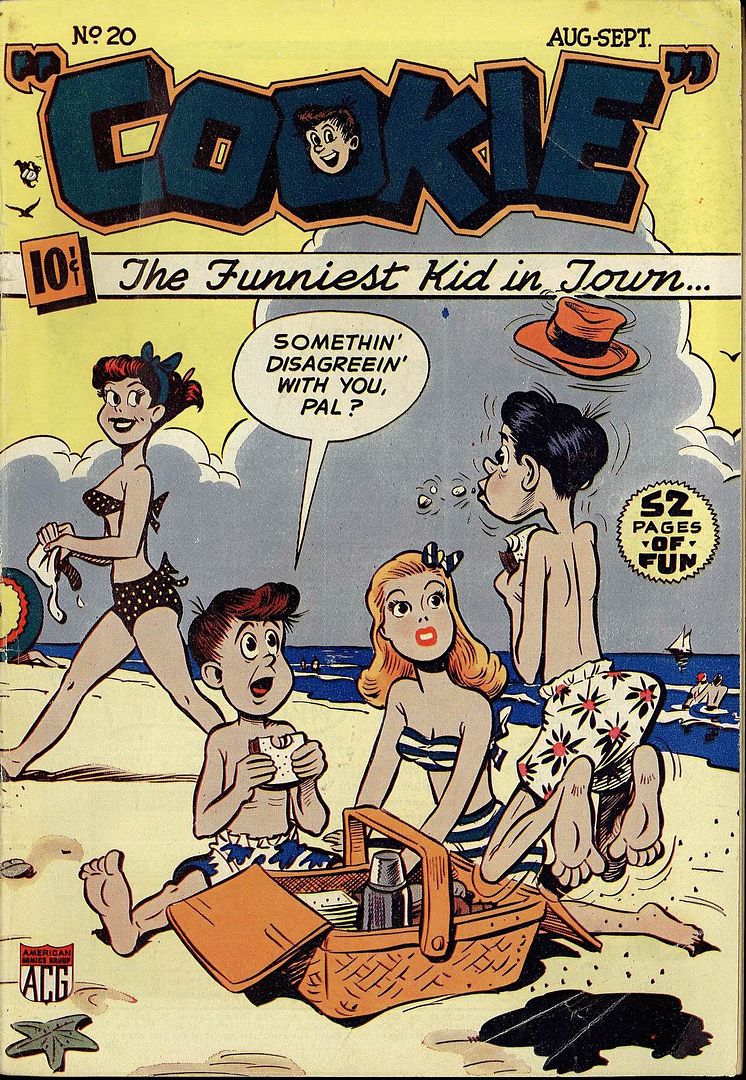
-
From Russia with to Love.

-
From Marines to Submarines
(not my copy, just saw the opening... )

-
Another one I can scratch off my list.

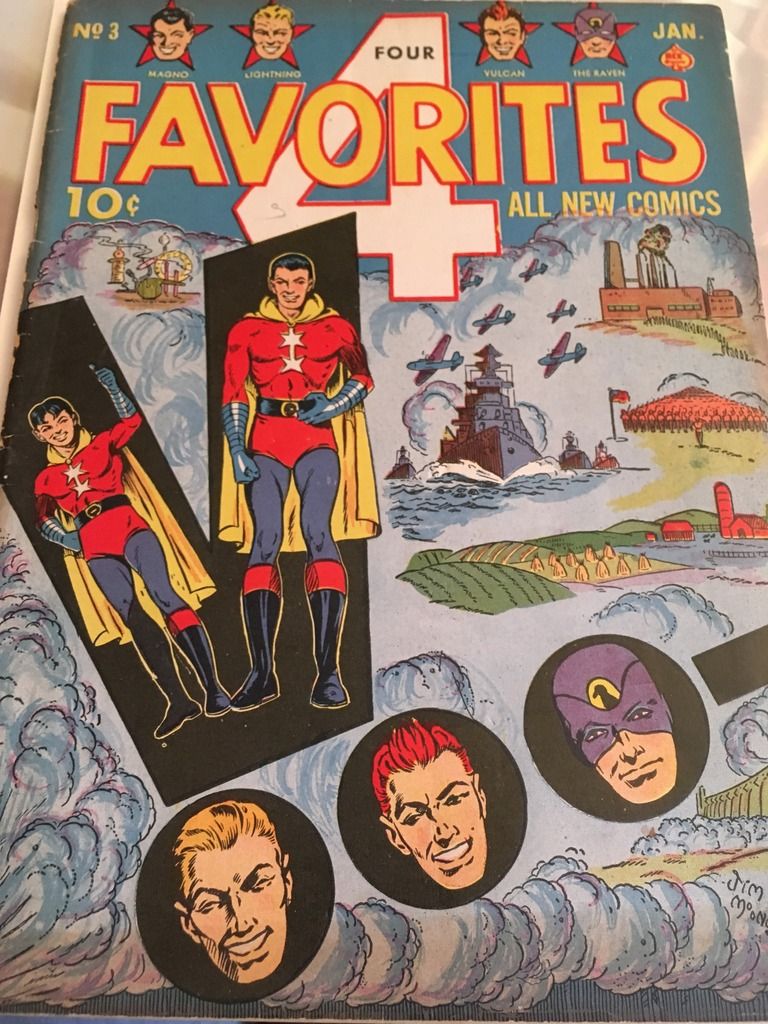
Love this book. The Lightning story is inspired by a 1939 espionage scare against Hoover Dam.
-
Are you related to VP John C Calhoun?
That was my thought also (his father's name was Pat, I believe). There's a Pat who worked with JP Morgan in the turn of the century railroad era too.
-
Good on you, Bob. Here's Pat & Pa, Admiral William L Calhoun, back in the precode days. Gone too long, but never far away.
Oh, cool.

And...
 , so maybe a couple other Pats in the family tree, I'm thinking? :
, so maybe a couple other Pats in the family tree, I'm thinking? : 
(been studying railroad and political development among other things to see how it affected development of newsstand distribution, etc)
-
Since when does art have to be strictly autobiographical to be good or true or worthy of our attention?
Honestly? I don't really want to hear about your life; I want your work to explain my life to me through the prism of your experience and our common humanity.
That's a tall order, I know. But it sounds to me like you've done that and then some. So sign me up!!!

It's a good point -- every time I see someone around here I know has a lot of experience from the day, dealers, con organizers, the fanzine guys, people who were there, etc, etc. They ought to be doing this in any form they can.
Gary Reed's passing, Steve Dillon's recent passing recent examples of one reason why -- people should remember these guys and what they did, what it was like, we should help make sure of it like the fans of the Roy Thomas era have done.
-
GREAT cover! Wow.
Thanks, definitely not your typical western cover.
There's some pretty fascinating now-forgotten frontier horror fiction that went on in the era... basically, there's 2 or 3 legends based on real events that lead to fictional headless horsemen and phantom riders that get combined and streamlined into the ghost rider characters of the golden age and beyond.
The above is partially inspired by the terrible exploits of Felipe Espinosa, who tortured and killed 32 people in Colorado in 1863, and was ultimately killed and beheaded (to confirm the kill, rumor has it he refused the bounty) by legendary tracker Tom Tobin. Espinosa's legend had grown to include a night-riding spectral horseman at just the time this story was being written.
Thinking back on the Espinosa saga many years later, which clearly troubled him his entire life, Tobin said: "It occurs to me that the question is not whether a choice exists between bad and good, but whether certain men are even aware of the difference. At what point, I wonder, does it stop being revenge?"
That's pretty much how Ghost Rider has been defined up through modern times.
-
Is something like this particularly tough to find? I've never seen one before.
When I first started looking, I found the #2 instantly and there were a couple other copies of it out there at the time.
I had the #1 as an ebay search for 3-4 years before I got one.
It's meant to be a Reader's Digest knock off, obviously. You'd presume it didn't work for Goodman, since he didn't run with it.
-
Not the Timely you were expecting, but the one you deserve (to see):

The hyper rare Captain America Vol 1 #1:
Only somewhat kidding, as this is generally considered to be the reason Cap #1 says vol 2 #1 in the indicia. Popular Digest #2 appears out of the blue just prior to Cap 1.
That aside, probably even cooler for the fact that it is indeed Martin Goodman's very first Timely Publication, shows you why Timely is called Timely, and hitting just before Marvel 1:
No comics, still cool though.










.thumb.jpg.4a739d51b35d96bdeb4ae52962aaa662.jpg)







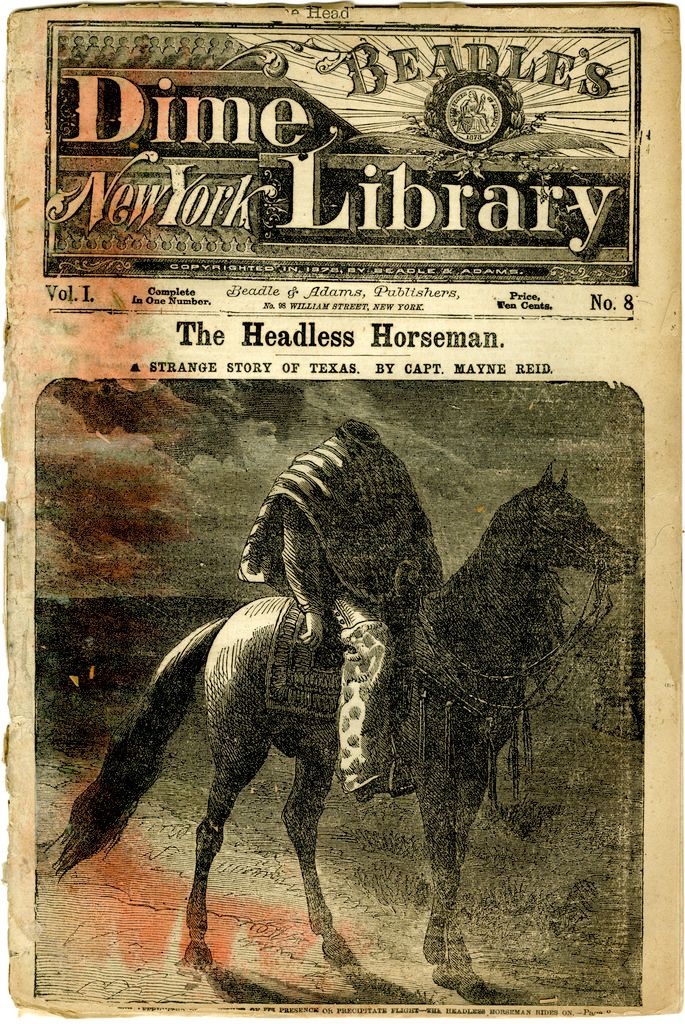
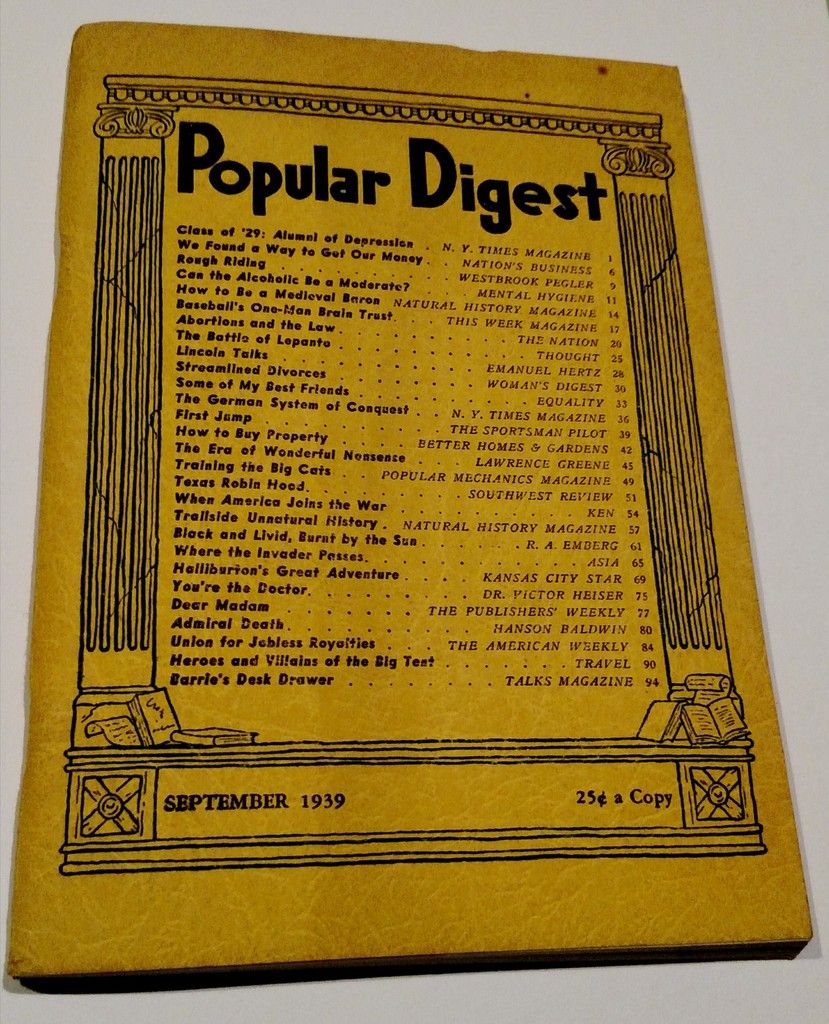
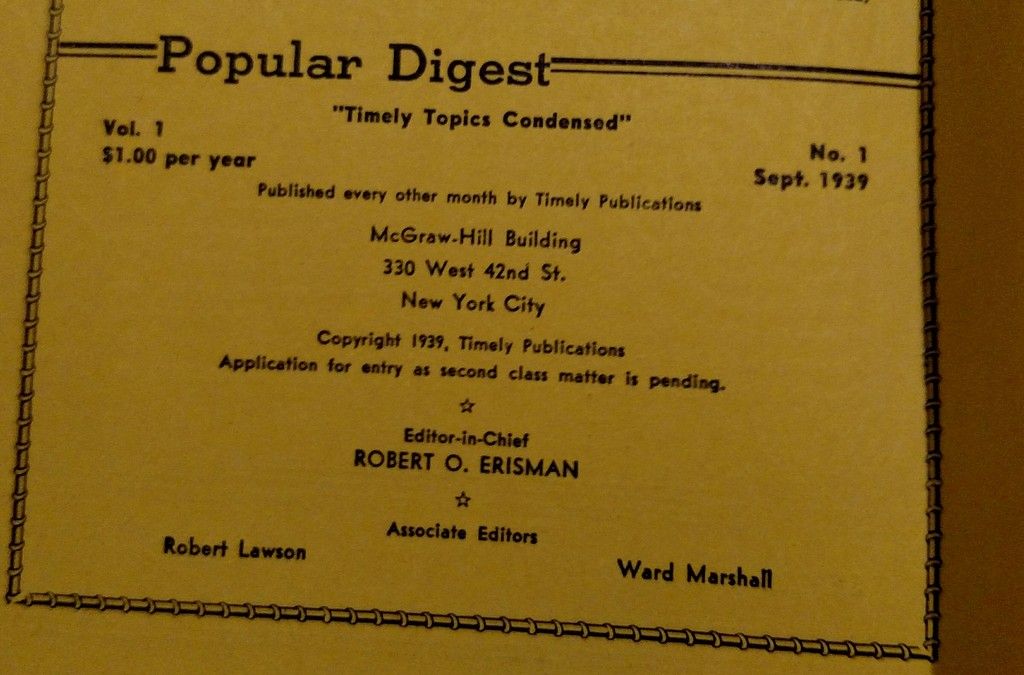
Who was the first costumed superhero?
in Golden Age Comic Books
Posted · Edited by markseifert
Anthony Wayne, the Revolutionary War-era General who is part of the inspiration for Bruce Wayne, is much much more of an inspiration than people think.
Legend has it that as a child, Wayne made himself a costume and called himself Gray Fox.
He organized his schoolmates into teams and trained them until they were all bloody every day. As an adult, he dressed as a dandy purposefully to make people underestimate him. Wayne is also considered the grandfather of modern American military tactics. He was our first General to emphasize the importance of preparation and military training in winning fights -- right down to "the man over the weapon" philisophy.
It's a thing, but Spring-Heeled Jack's importance to this is overstated imo, particularly in America. When the Sons of the Liberty dressed up as natives for the Boston Tea Party, they didn't think they were fooling anyone with the costume. They were mimicking native warriors by using their "savage garb" as one cartoon puts it, mentally assuming their attitude and power. The Sons were donning the garb of their Mother's people (this is backed up in cartoons of the time also -- Lady Liberty = Columbia = a native woman) to strike fear into the hearts of their enemies.
https://www.loc.gov/resource/ppmsca.50288/
This was also done in the 1830s during the anti-rent wars in upstate New York, in a time and place where Johannes Vinger, the first member of Bill Finger's family to come to America, lived. The anti-rent vigilantes were called "Calico Indians", but they didn't look like natives, really. They looked like... Batman.
This stuff was in the air in America, to an incredible extent.